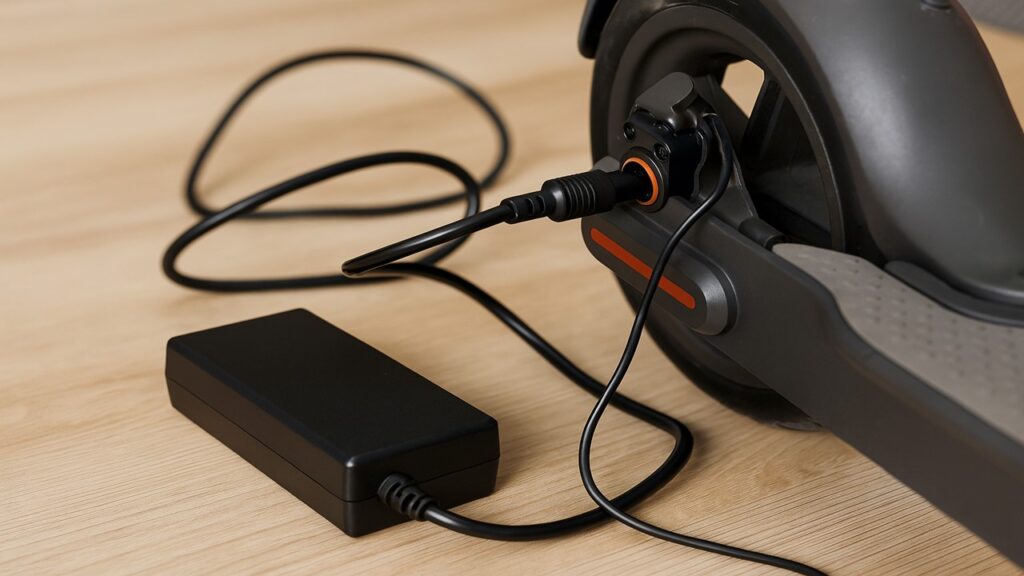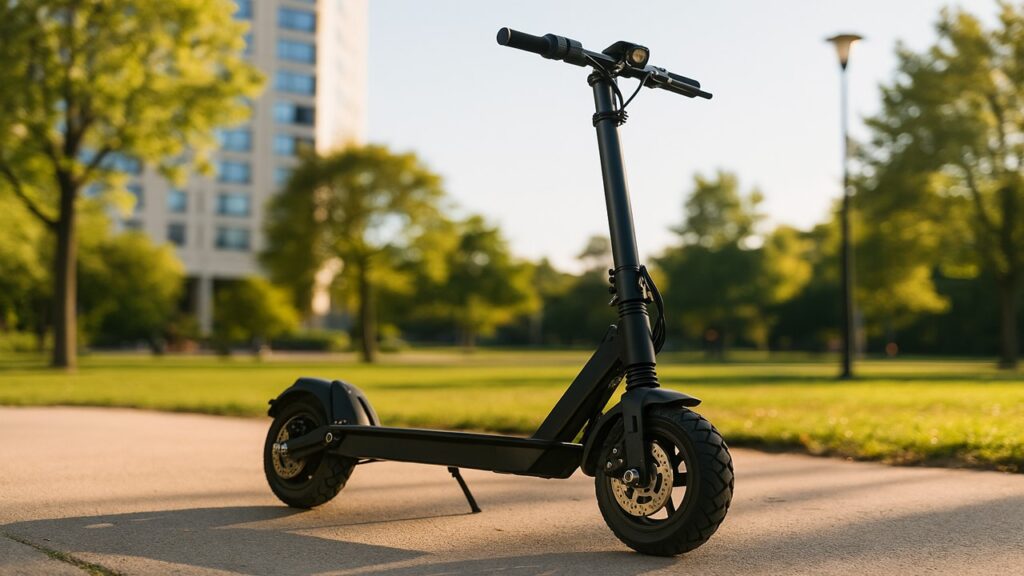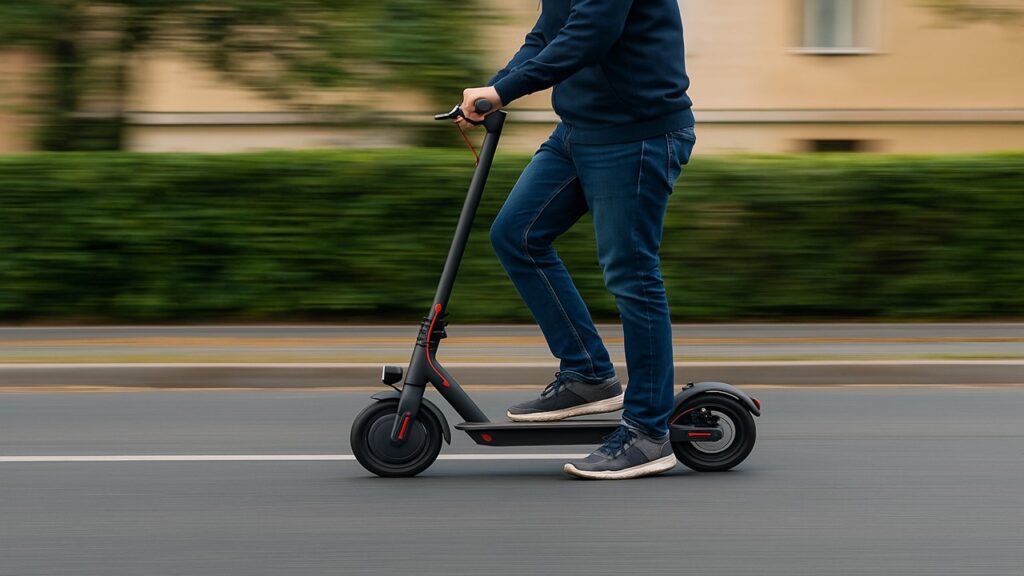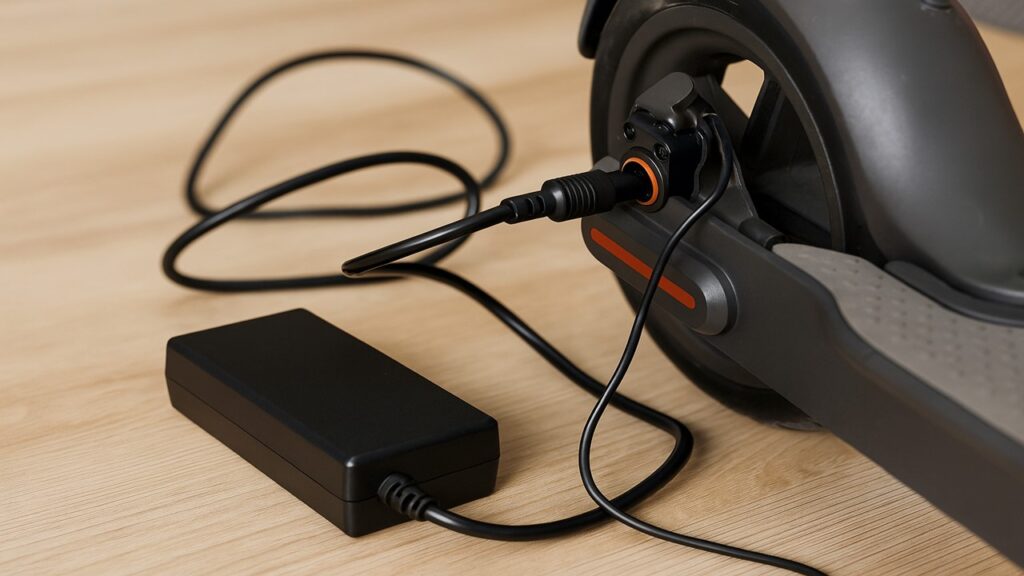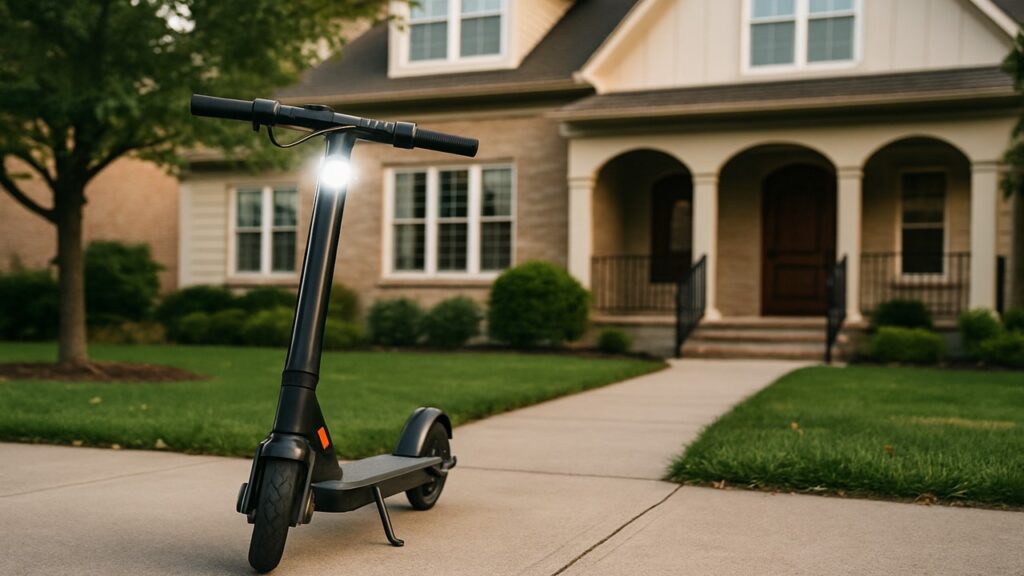
To turn on your electric scooter light, press and hold the power button for two to three seconds, or quickly double-tap it depending on your model. Some scooters, such as Segway or Xiaomi, let you control the lights through a mobile app or a small handlebar switch. Always check for a headlight icon on your display to confirm the lights are on.
Key Summary:
- Turning on your electric scooter light is simple—most models use the same power button or a quick double-press to activate headlights and taillights.
- Scooter lights play a vital role in night visibility, helping riders see the road clearly and making them noticeable to others in traffic.
- If the light doesn’t turn on, common issues include low battery, loose wiring under the handlebar, or firmware glitches that can be fixed with a quick reset.
- Regular maintenance, proper light use, and brightness adjustments not only improve safety but also extend the lifespan of your scooter’s lighting system.
Why Scooter Lights Are Essential for Safe Riding
Scooter lights aren’t just accessories; they are critical safety features designed to make you visible and confident while riding in low-light conditions. Headlights illuminate your path so you can spot potholes, curbs, or obstacles early, while taillights ensure that drivers and pedestrians can see you from behind. Whether you ride through city streets or unlit suburban roads, good lighting dramatically reduces the risk of collisions.
Beyond visibility, scooter lights are often required by local traffic regulations. Riding without proper illumination can lead to fines or accidents. In many countries, a bright white front light and a red rear light are mandatory for night riding. Keeping your lights in good working condition not only keeps you compliant but also ensures your scooter is ready for safe travel at any time of day.
Types of Electric Scooter Lights Explained
Electric scooters use several types of lights that serve specific safety and aesthetic purposes. Understanding what each one does helps you maintain and use them correctly.
- Headlights – Illuminate the road ahead for visibility.
- Taillights – Help other drivers notice you from behind.
- Brake Lights – Signal when you’re slowing down or stopping.
- Turn Indicators – Show your intended direction during lane changes.
- Deck or Ambient Lights – Add side visibility and style.
Now let’s look more closely at how each type functions and why it matters.
Headlights
Headlights are the most important lights on your scooter. They help you see clearly at night or in foggy weather, allowing for safe navigation. Most headlights are LED-based for brighter output and lower power consumption. Some models let you adjust brightness or beam angle to avoid blinding oncoming pedestrians or vehicles.
Taillights and Brake Lights
Mounted at the back, taillights glow constantly when your scooter is on. Many modern scooters combine taillights with brake lights that shine brighter when you slow down or stop. This instantly signals your actions to others, preventing rear-end collisions. Keeping the lens clean ensures maximum brightness and visibility.
Turn Signals
Turn indicators are common on premium or commuter models like Segway MAX or NIU scooters. They help communicate your intended movement to nearby traffic, which is especially useful at intersections. Always verify that the signals flash evenly before each ride; inconsistent blinking may indicate a wiring issue.
Deck and Ambient Lights
Deck or underglow lights add both visibility and flair. They’re not essential for seeing the road but make your scooter more visible from the sides. Riders often use these to enhance their scooter’s look during evening rides. Some brands allow color customization through mobile apps for added personalization.
How to Turn On Electric Scooter Light
Turning on your scooter lights usually takes only a second, but the exact method depends on your scooter’s brand and design. Most models use the same basic operation pattern.
- Ensure your scooter is powered on.
- Press and hold the power button for two to three seconds, or double-press it quickly.
- Watch for the headlight icon or visible beam to confirm the light is active.
- For scooters with a dedicated switch or app, use those controls instead.
Different brands follow slightly different approaches, so let’s break them down in detail.
Universal Method (Common Across Most Scooters)
Most electric scooters use a single power button for both turning the scooter on and activating the lights. Once your scooter is powered, hold the same button for two to three seconds to turn the lights on or off. You’ll usually see an icon on the display confirming activation. This simple method works for popular commuter brands such as GoTrax, TurboAnt, and Kugoo.
Xiaomi and GoTrax Scooters
For Xiaomi and GoTrax models, press the power button twice quickly to toggle the headlight. The dashboard display will show a small bulb icon when the light is on. If nothing happens, make sure your scooter is not in sleep mode and the battery is charged above 20 percent.
Segway Ninebot Scooters
Segway Ninebot scooters include app-controlled light settings. To turn them on, open the Segway-Ninebot app, connect to your scooter via Bluetooth, and select Vehicle Settings → Lights → On. This method also lets you adjust brightness or set automatic night mode for convenience.
Hiboy, TurboAnt, and NIU Scooters
These models often feature a physical light switch near the left handlebar. Flip the switch forward to activate the headlight and taillight together. In some NIU models, you can control lights through the company’s app for added customization.
Dualtron, Kaabo, and Off-Road Scooters
Performance scooters like Dualtron or Kaabo use separate toggle switches near the deck or throttle area. These switches may control multiple lights, including side strips or extra spotlights. Always power the scooter off before unplugging or inspecting these lights to prevent short circuits.
By knowing how your specific scooter operates, you’ll ride safely, stay visible, and conserve battery power more efficiently.
How to Turn Off or Toggle Scooter Lights
Turning off your scooter lights is just as easy as turning them on, and it’s an important step for preserving battery life. Most electric scooters use the same control pattern for both actions. Simply press and hold the power button for two to three seconds, or double-tap it again if that’s how your model activates the lights. When the lights turn off, the headlight icon on the display will disappear or dim.
Some scooters feature a dedicated switch or app setting that allows you to toggle the lights quickly. For instance, models from Segway or NIU can automatically adjust or deactivate lights when ambient brightness increases. It’s a good habit to turn the lights off after every ride, especially when storing the scooter indoors, to prevent unnecessary battery drain.
Troubleshooting – Electric Scooter Light Not Turning On
If your scooter light doesn’t respond, it’s usually caused by simple issues like a drained battery or a loose connector. Before assuming the light is faulty, perform a few quick checks.
| Problem | Likely Cause | Quick Fix |
| Light doesn’t turn on | Low or dead battery | Charge the scooter to at least 30% before testing again |
| Light flickers or dims | Loose wiring under handlebar | Inspect and reconnect the wire plug or harness securely |
| App-controlled light not working | Bluetooth or firmware glitch | Reset the scooter or reconnect through the app |
| Light indicator shows “on” but no output | Burned-out LED or damaged switch | Replace LED module or visit a service center |
| Works intermittently | Faulty wiring or corrosion | Clean connectors and check for rust or moisture damage |
Always check the wiring under the handlebar, since that’s where most light connections sit. If you’ve recently updated the firmware or changed app settings, a reset might help. Persistent failures could indicate a short circuit or damaged controller, in which case professional inspection is recommended.
How to Adjust Brightness or Customize Lighting
Many modern scooters allow you to adjust light brightness through their onboard display or companion app. Scooters like the Segway Ninebot or NIU models feature app-based controls where you can set automatic night mode, brightness levels, and even dynamic lighting effects. This flexibility is useful for balancing visibility with battery usage—brighter settings consume more power but offer better safety in dark conditions.
Some advanced scooters also support customizable lighting options, including colored deck lights or turn signal animations. Riders who want added visibility can install aftermarket LED strips or auxiliary headlights. However, always use waterproof, scooter-rated accessories and ensure the power draw doesn’t overload the electrical system. Keeping the light beam properly aimed and glare-free ensures both you and other road users stay safe.
Common Mistakes Riders Make With Scooter Lights
Many riders unintentionally shorten the lifespan of their scooter lights through small but avoidable mistakes. These errors often lead to dim beams, flickering, or total light failure over time.
- Leaving lights on when not in use: Keeping the lights active while parked or charging drains the battery unnecessarily and can shorten overall battery health.
- Installing incompatible LEDs: Not all bulbs match your scooter’s voltage and wiring, which can cause overheating or short circuits. Always use manufacturer-approved components.
- Ignoring waterproofing: Riding in the rain without sealed connections can let moisture in, corroding light terminals and reducing brightness. Check for rubber gaskets around light housings.
- Tampering with wiring: Unplugging connectors or modifying circuits without powering off the scooter can damage internal boards. Disconnect power before making any adjustments.
By avoiding these mistakes, you’ll preserve your lighting system’s performance and prevent costly repairs later.
Safety Tips for Riding at Night
Riding after dark can be both enjoyable and safe when your scooter’s lighting and visibility are properly managed. Good lighting habits not only protect you but also make you more noticeable to drivers and pedestrians.
- Clean your lenses regularly: Dust or water spots can reduce brightness by up to 30 percent. Wipe lights before every night ride.
- Wear reflective gear: Reflective jackets, helmets, and ankle straps help amplify visibility from all angles.
- Check your light angles: The headlight beam should point slightly downward to illuminate the road without blinding oncoming traffic.
- Ride at moderate speeds: Reduced visibility means less reaction time. Keep your speed lower than in daylight conditions.
- Use additional safety lights if needed: Handlebar or helmet-mounted lights can enhance side visibility in busy traffic areas.
These habits make a major difference in how visible you appear to others and how confidently you can handle nighttime rides.
Final Thoughts
Electric scooter lights are simple but vital components that directly affect your riding safety and visibility. Knowing how to operate, maintain, and troubleshoot them ensures you stay seen, avoid accidents, and extend your scooter’s lifespan. Always follow brand-specific instructions for switching lights on or off, and check wiring or firmware if problems occur. Keeping your lights clean, bright, and properly aligned can turn even the darkest path into a safer ride home.
FAQs
Can I upgrade my scooter’s headlights to brighter ones?
Yes, as long as the replacements match your scooter’s voltage and are designed for the same connector type. Avoid using car or motorcycle LEDs, as they may overload your scooter’s wiring.
Do scooter lights drain the battery quickly?
Not significantly. LED lights consume minimal power compared to the motor, but keeping them on unnecessarily can shorten your total riding range slightly.
Why does my scooter light flicker when I accelerate?
This usually happens when voltage temporarily drops under load. It’s normal in older scooters, but if flickering is frequent, inspect wiring connections or test the battery’s health.
Can I ride during the day without lights?
Yes, but it’s safer to keep them on in cloudy weather or shaded areas. Daytime running lights help drivers notice you sooner.
What should I do if both front and rear lights stop working?
Check the main power cable and controller first. A blown fuse or disconnected wire is often the cause. If that doesn’t help, have a technician inspect the electrical system.

Max Volt is an electric scooter and e-bike enthusiast who rides daily and knows the nuts and bolts of every model. With years of hands-on repair experience and real-world testing, Max shares practical reviews, maintenance tips, and buyer guides to help riders choose the right gear with confidence. His mission is to make electric commuting safer, smarter, and more enjoyable for everyone.






